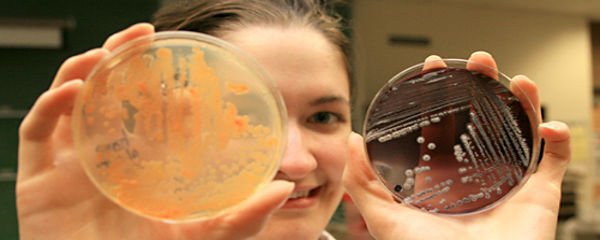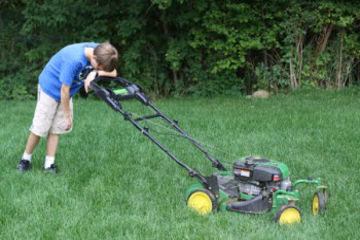What I’ve Learned:
Quiescence: how much less growth could there be? None. None less growth.
Isaac Newton said a body at rest tends to stay at rest. That’s the First Law of Motion.
My mother said a body at rest had better tend to get his lazy teenage ass off the couch and mow the lawn before his father gets home, if he knows what’s good for him. I’m not sure that’s a “law” of anything, but it always got me moving. Eventually.
Inside your body are trillions of cells, and right now many of those are also at rest, in a state known as quiescence. What they tend to do next depends on what sort of cells they are, and how they got into that state to begin with.
Like teenagers, most cells go through phases. But instead of “goth skateboarder” or “sparkly vampire”, your cells go through phases of the cell cycle. The cell cycle is a set of steps cells go through to divide, because reproducing requires very careful planning.
If a cell went through the division process without a roadmap, anything could happen. It could split before it’s ready, and produce deflated Whoopie cushion cells that aren’t helping anyone. It could get its DNA scrambled, and serve it to the daughter cells, family-style. Or it could divide into fourteen cells at once, none quite the way they should be. Like Duggars. It’s terrifying. Thank goodness for the cell cycle.
But a cell’s life isn’t all spent thinking about reproducing. This isn’t college. Sometimes, cells need to exit the rat race of dividing over and over, and rest in quiescence. Take heart muscle cells, for instance. Once your heart has grown to full size during development, you don’t want it getting any larger.
(I know people like to think they have a “big heart”. But if it were big enough to squish your lungs between your ribs, you might reconsider that goal.)
To keep your heart from growing three sizes each day, the mature muscle cells are pulled out of the cell cycle right after a division, in a phase called G1. The “G” stands for “growth”, which is what cells typically do after dividing, but quiescence is a resting state, sometimes called phase G0. Because there’s no growth. Or dividing. Or anything else. The cells just sit there, doing their thing. Pumping blood, keeping you alive and leaving all the worrying about reproducing to you. If you’re into that kind of thing.
This also happens with neurons and other cells that stop growing after development; they enter quiescence, and basically never come out. But other cells can slip into the G0 phase from G1, for just a little post-division breather. Think of it as microscopic maternity leave.
Except that once cells divide, there’s no “parent” cell left. So really, it’s the children who were just produced that get a rest. Lazy kids. That grass is never getting mowed.
These “paused” cells — and in theory, any cells — can be pulled out of quiescence under the right set of circumstances. That could be a growth factor released in the body, or some other growth-goosing signal. Or maybe there are little mothers running through our bloodstreams, telling cells to get busy and do their chores.
The textbooks are silent on that last one. But sometimes, it’s the only thing that works. You do not want to be in the quiescence phase when your father gets home.




